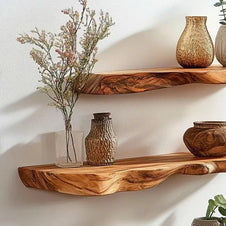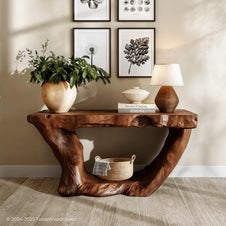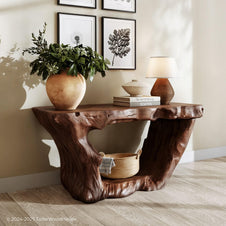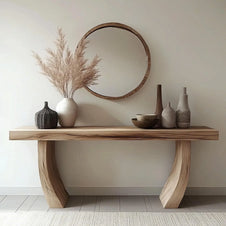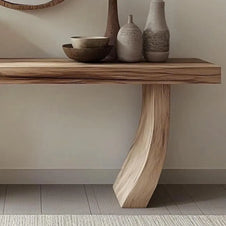Tree bookshelves combine artistry with vertical storage, but without careful attention, they can become unstable. These tree bookshelf stability factors guide you through design, material, anchoring, assembly, and upkeep to ensure your piece remains safe and reliable.
Why Stability Is a Real Concern for Families
Tree bookshelves are admired for their artistic charm and vertical efficiency, especially in modern, compact homes. However, their unique silhouette - tall, narrow, and branch-like - introduces an inherent risk of imbalance that standard rectangular bookcases typically avoid.
For families with young children, these risks become more serious. Children may treat a bookshelf like a play structure - climbing, leaning, or yanking on shelves to reach a book. Pets, too, can bump into the unit during play.
Without a stable foundation or secure anchoring, even a minor shift in weight distribution can cause the bookshelf to sway or, in worst cases, tip over entirely.

This solid tree-trunk corner shelf brings rustic charm and warmth to tight spaces. A nature-inspired piece that feels both grounded and inviting.
The situation becomes even more complex in homes with smooth flooring like hardwood, tile, or laminate. These surfaces reduce grip at the base, allowing movement with less resistance. Placing a tall bookshelf on uneven or unlevel surfaces further amplifies these risks.
To ensure long-term safety, it’s essential to understand and apply core tree bookshelf stability factors, from the choice of base design to materials and anchoring strategy. Paying attention to these tree bookshelf stability factors early in your selection and setup process helps prevent accidents and builds peace of mind in spaces where safety and beauty must coexist.
Key Design Features That Impact Stability
When it comes to preventing bookshelf wobble, design choices matter just as much as materials. The form and layout of your tree bookshelf influence how weight is distributed, how the shelf interacts with the floor, and ultimately, how safe it is to use.
Aesthetics are important, but not at the expense of balance. To better understand which elements truly influence performance, let’s break down two of the most critical tree bookshelf stability factors: base design and shelf configuration.
1. Wide vs. Narrow Base — What Works Better
A wide base provides a stable footprint, resisting tipping more effectively than a narrow or tapered foundation. According to hobbyist discussions on NC Woodworker forums, many users retrofitted narrow-base models with side extensions to improve balance, a clear illustration of a critical tree bookshelf stability factor.
Seek designs with supportive legs or platforms that extend beyond the trunk for better resistance against lateral force or tilting.

A playful and purposeful stand for your favorite reads, this tree-shaped book holder turns any open book into a decorative feature. Great for cookbooks or rotating reads.
2. Shelf Layout and Weight Distribution
An irregular branch layout can be pleasing to the eye, but asymmetrical loading seriously shifts the center of gravity. Heavy items placed on high shelves or far-reaching branches increase instability.
Load heavier books on the bottom tiers and reserve the upper branches for lightweight decor. This placement strategy addresses key tree bookshelf stability factors for long-term safety and performance. Balanced shelving not only looks clean and intentional but also actively supports structural stability.
Understanding how form influences function is essential. When choosing or customizing your bookshelf, these tree bookshelf stability factors should guide your decision-making as much as aesthetics.
Materials Matter – Is MDF Stable Enough?
Not all wood is created equal, especially when it comes to supporting tall, branch-shaped bookshelves. The material you choose directly impacts how well the bookshelf can bear weight, hold fasteners, and resist moisture or movement over time.
One of the most overlooked yet important tree bookshelf stability factors is your choice between solid and engineered wood.
1. Solid Wood vs. Engineered Wood
Different woods respond differently under stress, and those differences matter when you’re designing or buying a tall, branch-structured shelf. From joint strength to moisture resistance, material choice is one of the most important tree bookshelf stability factors.
The table below breaks down how popular wood options like oak, pine, plywood, and MDF perform in real-world conditions, helping you choose not just what looks good, but what will last safely over time.
|
Material
|
Pros
|
Cons
|
Best Use Case
|
|
Oak (Solid)
|
Extremely durable, holds screws well
|
Heavier, higher cost
|
Long-term, high-load shelving
|
|
Pine (Solid)
|
Lightweight, easy to cut and shape
|
Softer wood, more prone to dents
|
Decorative or light-use applications
|
|
Plywood
|
Stable layering resists moderate stress
|
Quality varies, may delaminate
|
Mid-budget, structurally supported builds
|
|
MDF
|
Smooth surface, affordable, easy to paint
|
Weak joints, swells with moisture
|
Low-stress, anchored-only units
|
This breakdown illustrates how material behavior plays into key tree bookshelf stability factors like load capacity, joint strength, and moisture resistance. When making a choice, consider not just aesthetics or price, but also how well the material supports long-term performance.

Clean, modern, and striking, the white tree bookshelf is a minimalist’s dream. Its bold silhouette adds visual interest without overwhelming the room.
2. Structural Reinforcements to Look For
Regardless of the wood type, smart structural reinforcements can significantly enhance stability. Look for:
-
Steel corner brackets at major joints
-
Rear-mounted X-bracing or full back panels
-
Dual-direction screw placement at shelf connections
-
Reinforced platforms or thickened trunk sections
Incorporating these features turns even basic materials into highly stable builds. Whether you’re investing in a custom piece or buying off-the-shelf, understanding how these tree bookshelf stability factors relate to materials and reinforcement will help you make a better, safer choice.
Anchoring Techniques to Boost Stability
Even the most carefully designed tree bookshelves can become unstable without proper anchoring. Anchoring is one of the most critical tree bookshelf stability factors, especially in homes with children, pets, or high foot traffic.
The type of wall you’re anchoring into determines which hardware you should use:
-
Brick or concrete: Choose expansion bolts or masonry anchors rated to hold both the weight of the bookshelf and any contents.
-
Drywall or plasterboard: Use toggle bolts or heavy-duty wall plugs. Always match your anchor size to the shelf’s weight and height.
-
Wood paneling: Lag screws into studs offer a strong, permanent fix.
Anchor points should be placed near the shelf’s center of gravity, not just at the top, ideally angled slightly downward to improve pull resistance. Once installed, test the anchor’s strength by gently pulling the unit at chest height. A properly secured shelf should have minimal movement.
Applying these anchoring best practices not only addresses structural needs but also fulfills essential tree bookshelf stability factors, transforming a decorative piece into a truly safe and lasting part of your home.
Common Assembly Mistakes
Even high-quality materials and smart design won’t protect your bookshelf if the assembly is poorly executed. Missteps during setup can compromise some of the most critical tree bookshelf stability factors, resulting in wobbly or dangerous shelves.
Be mindful of these common errors:
-
Misaligned screws: Fasteners driven in at the wrong angle can weaken joints and reduce overall support.
-
Uneven bolt tightening: Tightening one side more than the other twists the structure and shifts the balance.
-
Loose hardware: Failing to fully secure nuts, bolts, or brackets allows unwanted movement, even under light loads.
-
Skipping anchor tests: Assuming a wall anchor is secure without testing may leave your shelf unstable.
-
Rushing the build: Forgetting to level the base or align the frame leads to lasting imbalance.
Taking the time to assemble the unit with care helps preserve the integrity of all key tree bookshelf stability factors, ensuring long-term performance and safety.
Long-Term Stability Maintenance
Stability isn’t a one-time concern - it requires consistent upkeep over the lifespan of your tree bookshelf. Even a well-anchored unit can shift or degrade due to seasonal changes, material fatigue, or household activity.
To ensure ongoing performance, follow these simple practices:
-
Inspect all fasteners every 3-6 months to check for loosening caused by movement or temperature changes.
-
Maintain a 2-3 cm gap between the shelf and the wall to allow airflow and prevent moisture buildup.
-
Use felt pads or leveling shims to rebalance the base if the floors settle or shift over time.
-
Seal any cracks or surface splits promptly using wood filler or non-toxic sealant to preserve structural integrity.
By making these steps part of your routine, you actively preserve key tree bookshelf stability factors, extending the life of your furniture while keeping your home safe and organized.

An artistic statement for book lovers, this tree bookshelf blends function with imagination. Ideal for cozy nooks, it transforms reading into an experience.
FAQs
Q: Should I place a rug under the tree bookshelf?
A: Not necessary, but using a non-slip mat beneath the base can increase friction, especially on tile or hardwood floors. This small addition enhances one of the key tree bookshelf stability factors.
Q: Is anchoring necessary if only lightweight books are stored?
A: Yes, anchoring is still recommended. Children or pets can still tip a shelf unintentionally. Prioritizing tree bookshelf stability factors ensures safety regardless of weight.
Conclusion
Choosing the right base design, material, assembly method, and ongoing care is vital. When combined with proper anchoring and smart usage, these tree bookshelf stability factors make the difference between a decorative piece and a dependable, safe fixture.
Explore our collection of stable, design-forward tree bookshelves in the Tailor Wood Haven Gallery. Need help selecting or customizing? Contact our team for expert support focused on durability, balance, and beautiful living.


